Sailing the Bahamas’ Abaco Sea
February 5, 2024
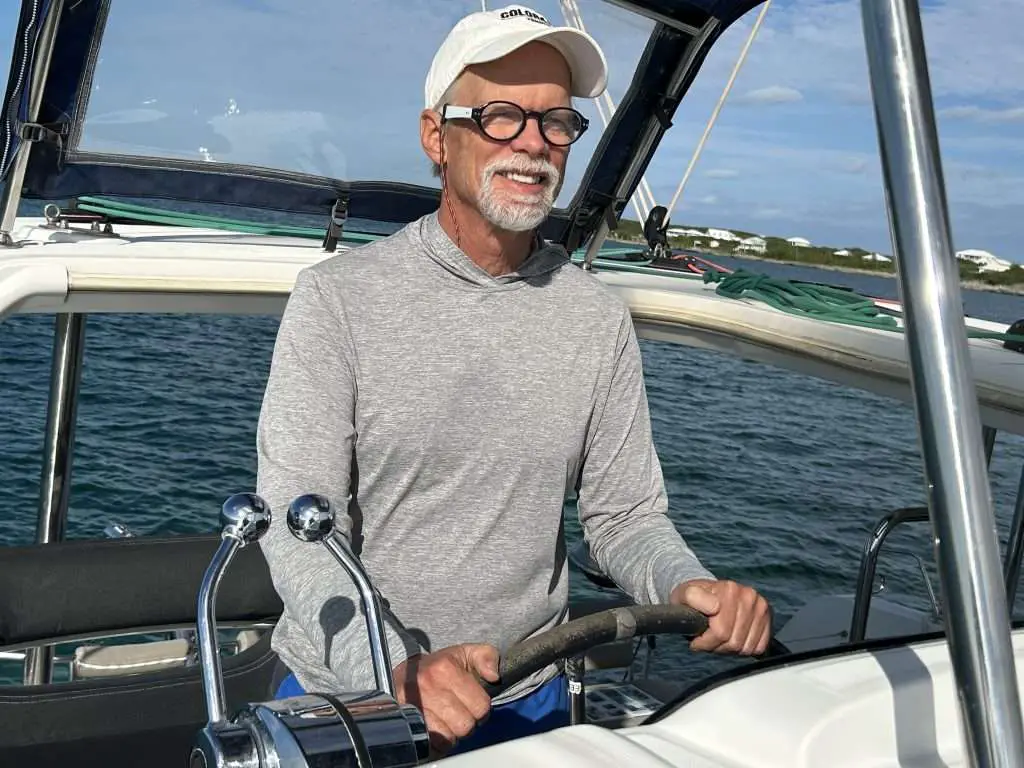
With a steady wind filling its sails, our 40-foot Bali catamaran slipped through the peacock blue waters of the Abaco Sea, a relatively shallow body of water in the northern Bahamas that averages less than 20 feet deep.
Our course was steady, and we only tacked a few times on our way to Man O’ War Cay (pronounced key), where our plans called for a light “workload” of hiking, swimming, snorkeling, collecting shells, reading, and relaxing. In the meantime, we familiarized ourselves with the spacious, two-hulled Indie Vortex cat (as catamarans are known in sailing lingo), got to know our fellow shipmates, and enjoyed the balmy 80-degree temperatures.

Thom Burns, a retired naval officer who runs the Northern Breezes Sailing School (northernbreezessailing.com) in Minnesota’s Twin Cities and Lake Superior’s Apostle Islands, was the commodore of our nine-cat flotilla – a veritable navy. He sailed with us on the Indie part of that first day, giving skipper John Blackburn a few tips and ensuring our four-member crew could handle our vessel.
Burns said catamarans are ideal for the Abacos because they have a shallow draft, unlike most monohull boats that require deeper water for sailing. In addition, they don’t heel (tip) much, meaning passengers are less likely to get seasick.
Moreover, cruise ships can’t ply the shallow waters of this sea, so there are no behemoths disgorging thousands of passengers in small ports. We only had to share the bays where we overnighted with sail and powerboats.
“The other great thing about cats is that people can spread out more in the large living area between the pontoons where the berths are located,” Burns said. “A 42-foot cat can easily handle eight people. With a monohull, that would require a 50-footer, and you’d still live in a tube, no matter how big the cockpit.”
My adventure (I didn’t know anyone on my boat before I signed up for this outing) began by flying from the Midwest to Miami and then hopping over to Marsh Harbor on Great Abaco Island- only about 90 miles from the mainland.
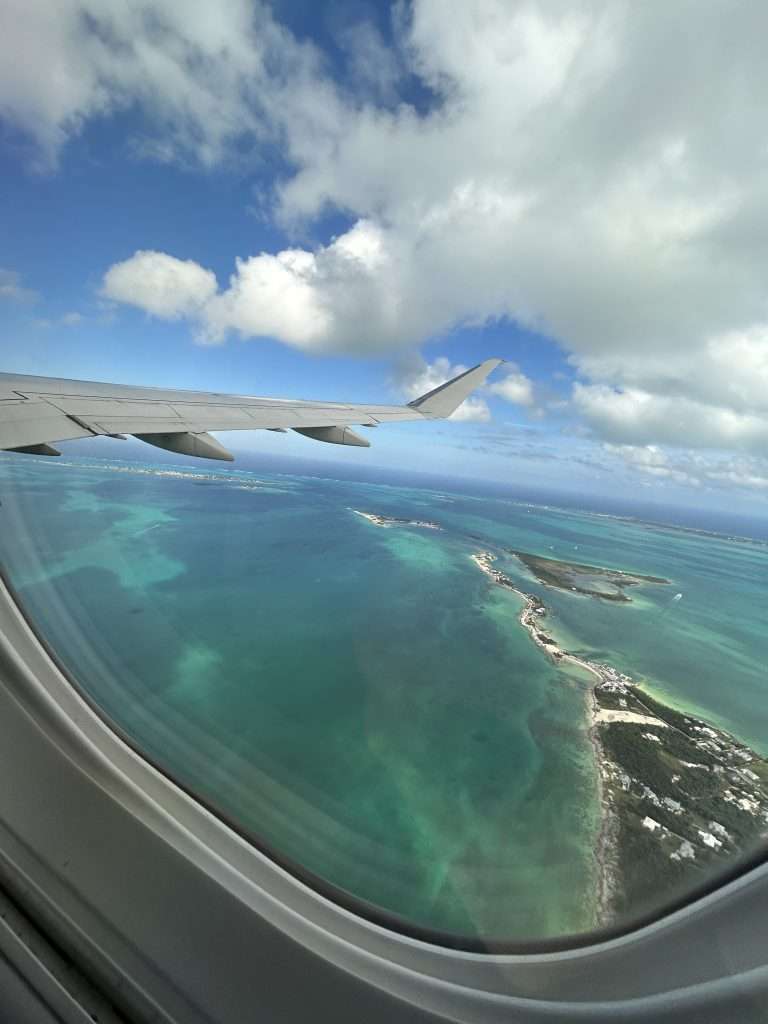
As I flew into the airport, I was stunned to see hundreds of acres of dead pine trees spreading out beyond the tarmac. They’d been stripped bare and killed on Sept. 1, 2019, when a powerful hurricane slammed into the Bahamas, bearing winds clocked at 185 miles per hour. Gusts hit 200 mph in the Abacos, which lie about 60 miles north of Nassau.
As if that weren’t enough, a massive storm surge of up to 23 feet swept away many buildings, tossed around working boats and yachts like toys, and submerged a large part of the Bahamas.
At Marsh Harbor on Grand Abaco Island, water in the harbor was sucked out by the hurricane’s low-pressure system. Then it came roaring back, sweeping vessels into the community and dumping them on streets and flattened houses.
“Ah, it was a terrible thing,” a taxi driver told me on my way to the Conch Inn Hotel and Marina (conchinn.com) to begin my week-long sailing trip.
It had been four years since that catastrophic event, and I saw evidence of destroyed buildings that had not yet been repaired. And while the Abacos have rebounded somewhat since Dorian struck, Burns said the recovery has been uneven throughout the archipelago.
So, besides getting away from Wisconsin’s chilly winter weather, it felt good to be helping the islands’ economy, more than half of which is based on tourism. Navigare Yachting (navigare-yachting.com), the charter company we used, looked like it employed at least a dozen locals.
Burns, who has sailed around the globe and had chartered in the Abacos before Dorian, said the nine cats he booked through Navigare was the largest group he’d ever assembled, which made for a fun, progressive dinner one night when we shuttled from boat to boat. But we were never herded together. Each day, we sailed our own courses to reach the next bay, arriving at our leisure.
It turned out that I actually knew some of the others in our small navy, including three Minnesotans with whom I’d sailed to Isle Royale in Lake Superior. There was also a Tasmanian who’d been my sailing instructor in the Apostles Islands a few years back and – surprise – an acquaintance from the University of Wisconsin’s Hoofers sailing club who had once sailed across the Atlantic.
After provisioning our cat that first afternoon, I enjoyed a fruity rum drink and salad at Snappy’s, the Conch Inn’s open-air bar, watched the sun set over the harbor, and then bedded down in my ample berth to the year in one of the Indie’s hulls. It even came with its own head (bathroom in landlubber’s terms).
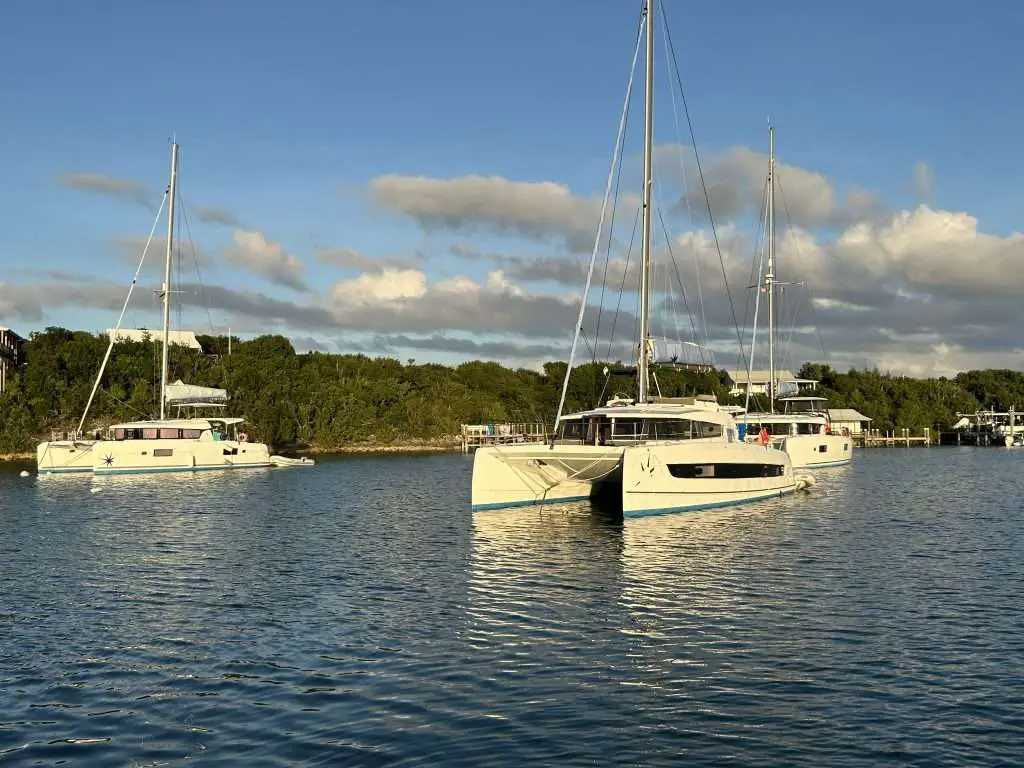
At the Man O’ War Cay, we tied up on a mooring buoy. Then, we took our dinghy to a public dock to hike to one of the Bahamas’ many lovely beaches. On the way, we encountered a chap named Albury, who came from a family of boat builders. He told us his people had been in the Bahamas since the mid-1600s.
“The standard story is that we all descended from ‘Loyalists’ who came here after the American Revolution because we sided with the British,” he said. “But my ancestors had already been here for six generations.”
On our way to a crescent beach covered with soft, white sand, we passed a small cemetery where many of the graves were Alburys.
We swam and floated on the Atlantic side of the cay, where Burns said he’d once practiced hunting submarines during his Navy days in waters that he called “ridiculously” deep. According to NASA, the basin to the east of the Bahamas falls off to depths of more than 13,000 feet.
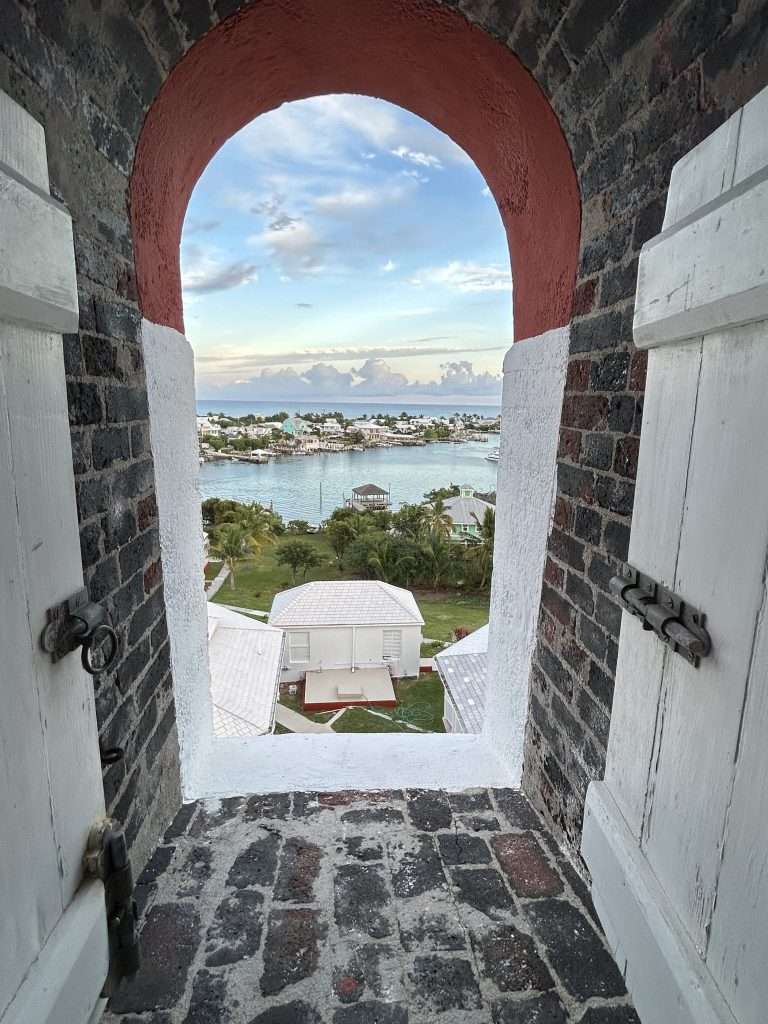
During the next five days, we sailed from harbor to harbor. One of our stops was Elbow Cay, home to a tall (and still working) red and white Elbow Reef lighthouse that we could climb. It offered wonderful views of the surrounding waters and countryside.
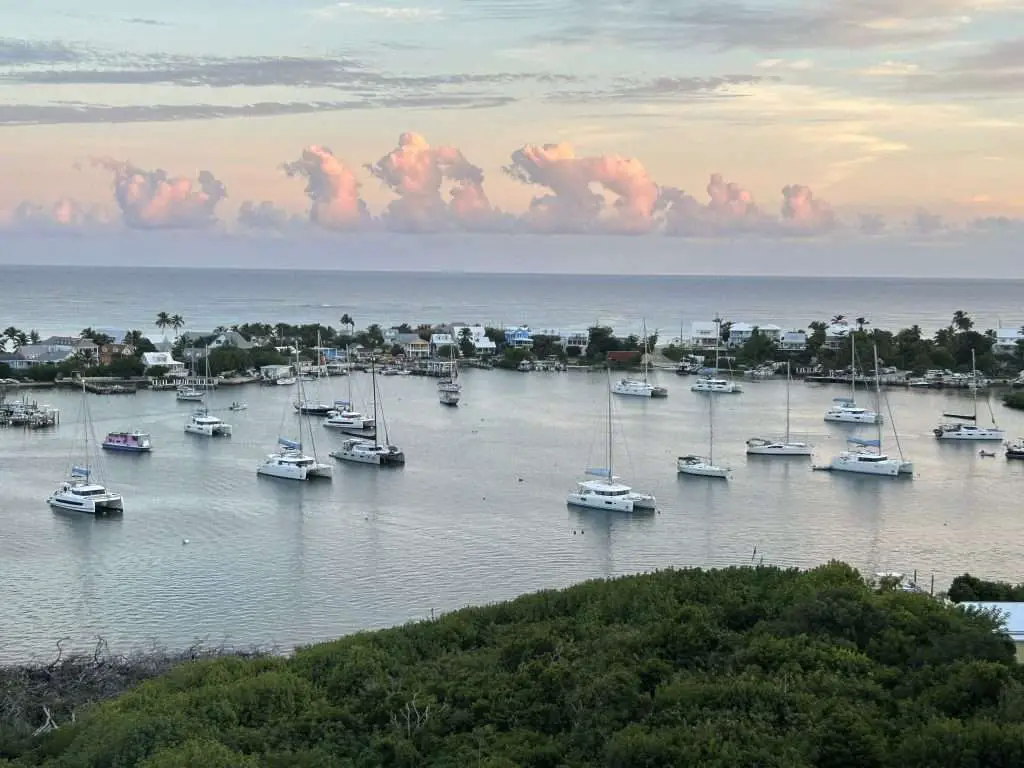
We dined that night at the luxurious Hopetown Inn and Marina (hopetownmarina.com), where I had a salad and a tasty bowl of conch stew.
The cost to stay at this hostelry? “Only” $900 a night for a two-bedroom cottage with a three-night minimum stay. Fortunately, I had a nice cabin on the Indie.
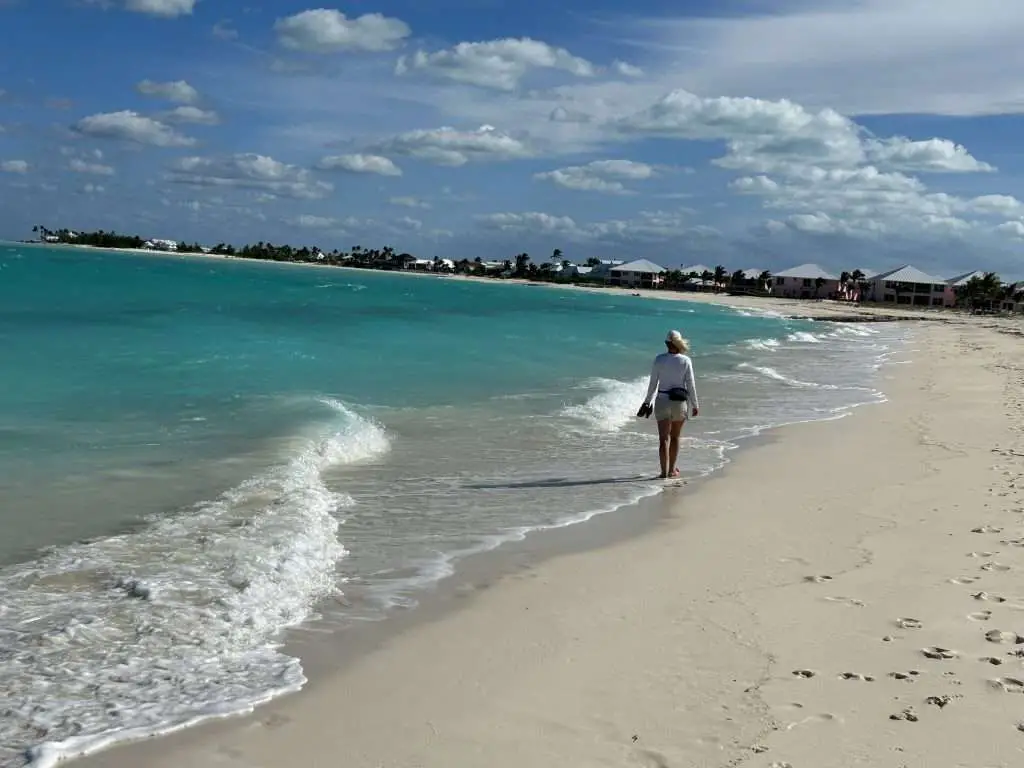
We also sailed to Treasure Cay, where we had breakfast at Cafe La Florence, a little restaurant and bakery famed for its cinnamon buns. Burns said it was the kind of small “mom-and-pop” business he likes patronizing. I munched on a flavorful carrot cake muffin and washed it down with coffee.
On our second-to-last day, we sailed to Baker’s Bay on Great Guana Island, hoping to snorkel with stingrays. We found none and then continued on to Fisher’s Bay, where we anchored in about 15 feet of water.
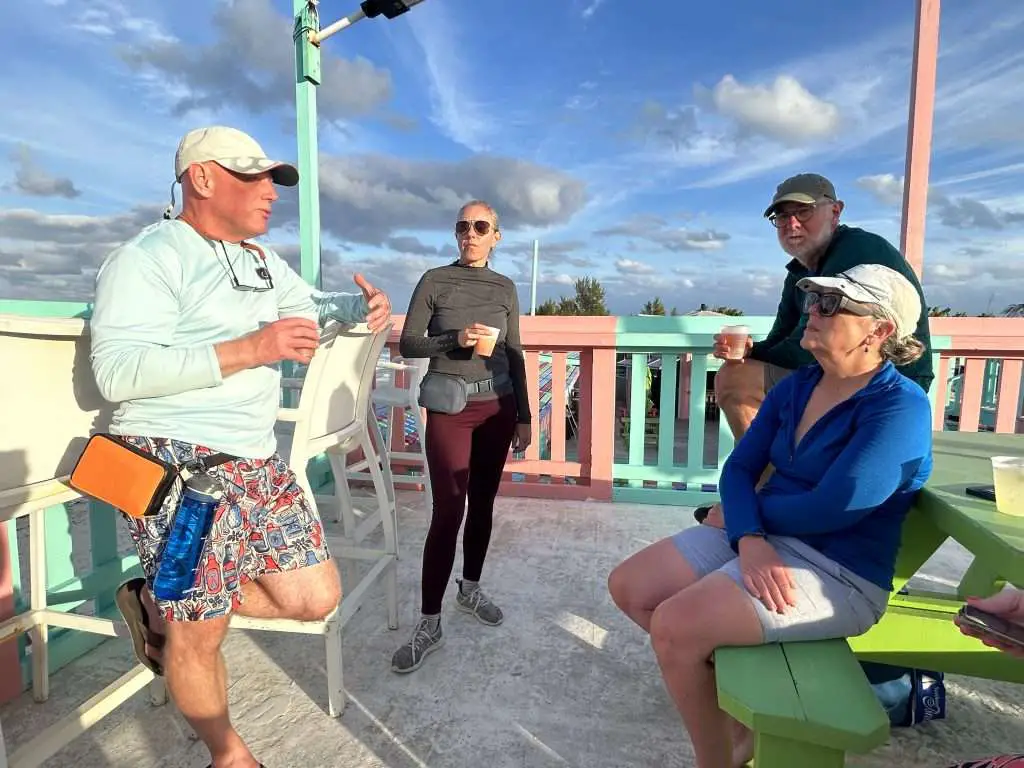
The afternoon’s highlight was hiking to a laid-back bar and grill called Nipper’s, (nippersbar.com) from which we could see the Abaco Sea to the west and the expansive Atlantic Ocean to the east.
A good portion of the crews from our nine cats had gathered there in the late afternoon to watch the puffy, cauliflower-shaped cumulus clouds turn pink and then orange, yellow, and red as the sun dipped below the horizon.
Would I like to return to the Abacos? You bet. Only next time around, I plan to skipper my own cat.
Brian E. Clark is a Madison, Wisconsin-based writer and photographer who contributes to the Chicago Tribune and LA Times on a regular basis. A native of Iowa, Clark is a University of Colorado, Boulder, graduate who focuses on adventure travel. He’s a veteran whitewater kayaker and skier who has lived in Norway, Sweden, Brazil and Bolivia. He worked for newspapers in Washington State and California for 25 years, including the San Diego Union-Tribune, before returning to the Midwest. He manages to head back West several times a year when he’s not off in other corners of the globe. Or poking around Wisconsin.
Link to original story at Everett Potter's Travel Report: https://www.everettpotter.